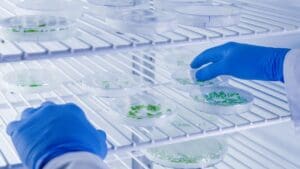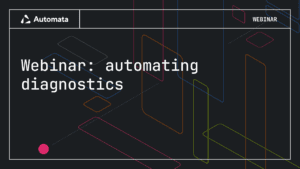What does automation look like in the microbiology lab?
Laboratory automation refers to the use of specialised equipment that enables workflows and processes to be conducted automatically without user interference. Automation is a valuable tool in microbiology laboratories, where routine tasks are renowned for being labour-intensive, time-consuming, and error-prone. Over recent years, there has been a shift towards automation of the most repetitive tasks within microbiology labs, and, with more and more processes beginning to be automated, users are realising the considerable advantages 1,2.
In a microbiology lab, several routine tasks can be successfully automated, including:
- Media: One of the most time-consuming, unskilled tasks in a microbiology laboratory is preparing media. Often, several different types of media with different additive combinations need to be prepared in bulk. Preparing media is a drain on researcher productivity, so automating this process can be an effective way to reclaim researchers’ time for tasks that require their high level of skill and expertise.
- Specimen processing: Similarly, specimen processing can be very time-consuming and prone to human error, particularly when many different samples need to be processed in clinical microbiology laboratories. Specimens labelled with barcodes can be scanned and inoculated onto solid or liquid media by automated processing solutions, ensuring accurate, reliable, and consistent sample processing
- Incubation and monitoring of culture plates: inoculated plates can be automatically transported to incubators with the required conditions, where they are incubated for a specified time. Plates can be monitored automatically, providing users with digital images at predefined times.
- Optimising incubation conditions: The optimal incubation temperature, CO2 concentration, and shaking speed (for liquid cultures) can vary between samples and relies on several factors. Optimising the incubation conditions for many specimens is time-consuming, labour-intensive, and hinders productivity. However, automated cell culture incubators can easily be programmed to test a range of culture conditions, removing the burden on researchers and ensuring optimal conditions. Detailed records facilitate quick examination of the results of each tested condition.
- Plate reading: Plates can be read and digital images taken automatically, which laboratory workers can use to pinpoint samples that require further investigation 3. Automating this process allows many more plates to be screened simultaneously than manual efforts and enables high-quality, comprehensive records to be kept of each sample.
- Specimen testing: Various testing processes can be automated, ensuring consistent, accurate, and precise results4. Two of the most common microbiology testing procedures are antimicrobial-susceptibility testing (AST), and strain identification via matrix-assisted laser-desorption ionisation time-of-flight mass spectrometry (MALDI-TOF MS). AST, which can be fully automated, involves inoculating and streaking samples onto antibiotic sensitivity discs, which are later imaged and analysed. MALDI-TOF MS can also be fully automated; with the processor seeding a plate which can be passed to the MALDI-TOF mass spectrometer for analysis
Systems like the WASP by Copan, Previ-Isola by BioMerieux, Innova by Becton-Dickinson and Inoqula by KIESTRA allow efficient and accurate inoculation of samples from selection to inoculation, separating colonies and labelling and sorting of inoculated media
Advantages of automation in microbiology labs
Efficiency and productivity
It has long been recognised that plant tissue culture can lead to a dramatic improvement in crops in commercial and agricultural settings4. Recent years have also seen the development of agricultural genomics (agrigenomics), an innovative area of plant tissue culture that utilises genomics to scale-up agricultural solutions.
Moreover, automated workflows can be continuous, extending the potential working hours of laboratories, which accelerates time to insight, enhances clinical outcomes and has economic benefits for the lab 3.
Consistency and repeatability
Automated microbiology equipment performs workflows in a highly standardised manner, which has several benefits over workflows performed by human users which are prone to error and inconsistencies. Consistent processes will generate more accurate, precise, and reproducible results. Automation significantly reduces the risk of technical and recording errors and provides assurance that each sample has been processed correctly.
Safety
Automating sample processing eliminates the need for laboratory staff to perform repetitive tasks, which often cause ergonomic issues such as repetitive strain injury (RSI), and exposure to hazardous material.
Traceability
Full microbiology lab automation improves the traceability of laboratory workflows and sample processing. Automated setups can provide full audit trails of what has been done to each specimen, when, and how, with digital images and data that can be accessed remotely when required. This can be useful for adhering to regulations, producing reports, and trainee education.
Challenges of automation in microbiology
Despite the many benefits of automation in microbiology, there are challenges and limitations that should be considered 6. Notwithstanding the longer-term economic benefits of automation in microbiology labs, the initial costs of purchasing and setting up automated microbiology equipment are high, and this can require a substantial investment that not all labs have access to. There is also a risk of downtime due to automated system failure. However, Automata’s LINQ service component promises ongoing support with the automation system, helping get equipment back up and running as quickly as possible.
Automata’s fully automated LINQ platform consists of three components: LINQ Bench, LINQ Cloud, and the Automata deployment and service, offering a comprehensive solution for all your microbiology automation needs. Get in touch today to learn how Automata’s LINQ solutions can help you on your journey to full microbiology lab automation.
References
1. Burckhardt I. Laboratory Automation in Clinical Microbiology. Bioengineering. 2018;5(4):102. doi:10.3390/bioengineering5040102
2. Naugler C, Church DL. Automation and artificial intelligence in the clinical laboratory. Crit Rev Clin Lab Sci. 2019;56(2):98-110. doi:10.1080/10408363.2018.1561640
3. Kirn TJ. Commentary: Automatic Digital Plate Reading for Surveillance Cultures. Burnham CAD, ed. J Clin Microbiol. 2016;54(10):2424-2426. doi:10.1128/JCM.01279-16
4. Cherkaoui A, Schrenzel J. Total Laboratory Automation for Rapid Detection and Identification of Microorganisms and Their Antimicrobial Resistance Profiles. Front Cell Infect Microbiol. 2022;12:807668. doi:10.3389/fcimb.2022.807668
5. Culbreath K, Piwonka H, Korver J, Noorbakhsh M. Benefits Derived from Full Laboratory Automation in Microbiology: a Tale of Four Laboratories. McElvania E, ed. J Clin Microbiol. 2021;59(3):e01969-20. doi:10.1128/JCM.01969-20
6. Leo S, Cherkaoui A, Renzi G, Schrenzel J. Mini Review: Clinical Routine Microbiology in the Era of Automation and Digital Health. Front Cell Infect Microbiol. 2020;10:582028. doi:10.3389/fcimb.2020.582028

Gene-editing technology such as CRISPR could be the future of agriculture. We…
Read more CRISPR in agriculture: applications, benefits & risks
Why taking learnings from manufacturing – and taking automation ‘off deck’ -…
Read more Automating cell culture assays: a case study
Watch our webinar to learn how the COVID-19 pandemic has empowered labs…
Read more On-demand webinar: Automating diagnostics